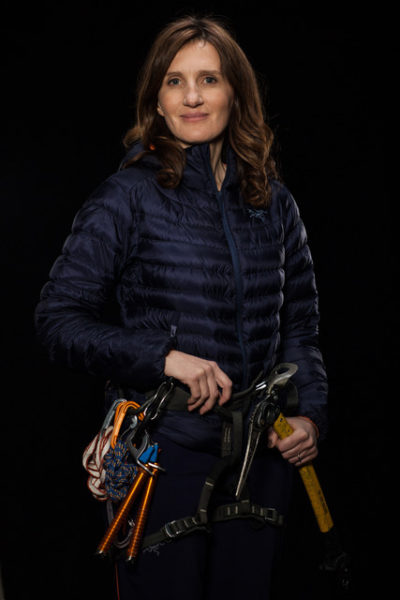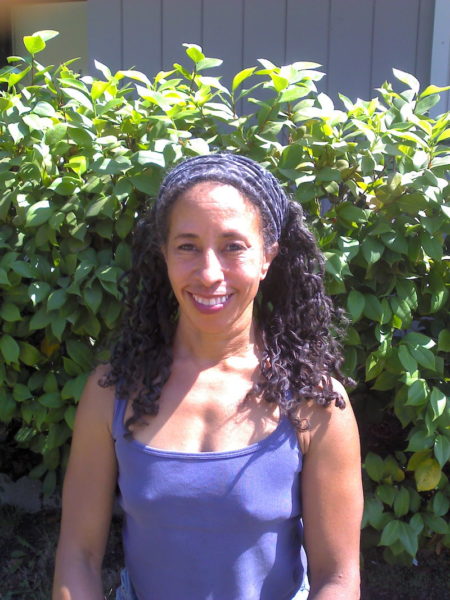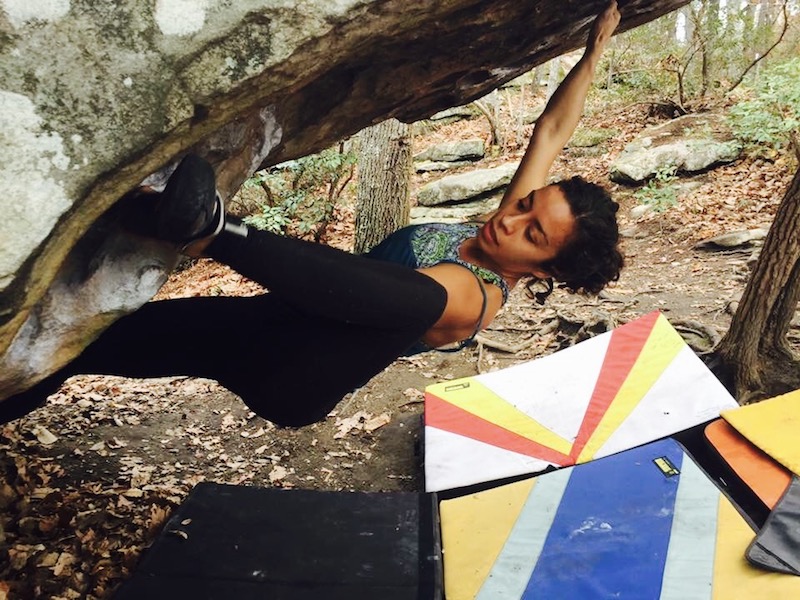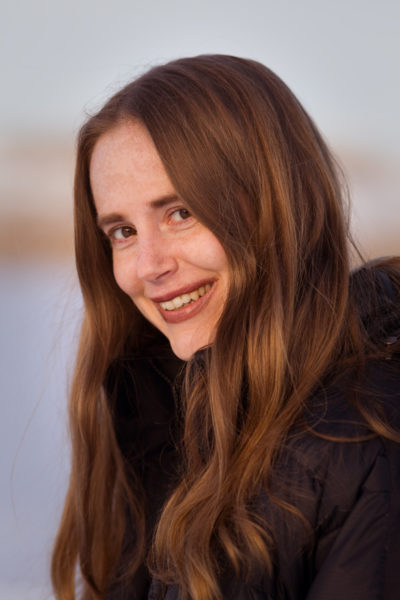By Mailee Hung. Header photo by Dean Fleming.
Women’s History Month is drawing to a close, but that doesn’t mean that the opportunity to embrace and legitimize female contributions to our world ever does.
Climbing is special in part because we have so many high profile, badass women pushing grades and the limits of the sport. There’s a prevailing belief amongst climbers at large that women are just as well-regarded and well-represented in the sport as men (despite disappointing statistics to the contrary). But for every Lynn Hill there’s an article that claims that “feminism has gone too far.” For every Margo Hayes there’s an argument that female first ascents are “holding women back.” And as much as climbing touts inclusivity and accessibility, there is still an obvious minority of, well, minorities in the gym and at the crag.
Meet five women who are working to change all that. Each contributes to climbing culture in critical ways, from developing nonprofits and mentorships, to amplifying marginalized voices in climbing literature, to increasing the visibility of women and minorities in the community. They of all people know that it takes more than good intentions to do better; it takes labor. Read on to learn more about the hard work that’s being done to support a real culture of diversity and inclusivity.
Masha Gordon
 Masha Gordon didn’t develop her love of mountaineering until on maternity leave in her 30s. Now a mother of two, in 2016 she earned the world record as the fastest woman to complete the Explorers Grand Slam and climb the Seven Summits—that’s summiting the seven highest mountain peaks on each of the seven continents, and skiing and trekking to the South and North Poles.
Masha Gordon didn’t develop her love of mountaineering until on maternity leave in her 30s. Now a mother of two, in 2016 she earned the world record as the fastest woman to complete the Explorers Grand Slam and climb the Seven Summits—that’s summiting the seven highest mountain peaks on each of the seven continents, and skiing and trekking to the South and North Poles.
After completing the Grand Slam, Masha launched GRIT&ROCK, a UK-based charity that aims to help teenage girls from inner city backgrounds “develop grit, determination, and self-confidence” through a year-long mountaineering training program that includes extensive mentorship from other women like Hazel Findlay.
GRIT&ROCK Foundation also announced The First Ascent Expedition Award to promote female first ascents and pioneering alpine ascents. It is open to individuals and teams of any nationality with a majority female participation. The awards for 2017 include a $4,000 Performance Award for female alpinists pushing the limits of the sport, two $2,000 Exploration Awards for projects seeking to increase our understanding of unclimbed peaks, and a $1,500 Special Prize for unique achievements in alpine climbing—this year the Special Prize went to the brother and sister team Dawa Yangzum Sherpa and Dawa Gyalje Sherpa, who are looking to put up a new alpine-style route on the east face of Chukkima Go, a mountain next to their home village.
Not only does this award support female-led teams to pursue their alpine dreams and highlight female talent, but it also helps them qualify for alpinism awards like the Piolet d’Or, which has only been awarded to two women since its inception in 1992.
Chelsea Griffie
 Chelsea Griffie is a seasoned Yosemite hardwoman—she was the first African American woman to climb El Capitan in 2001, and is “one of the go-to women of color climbers.” Though she finds that flattering, she is also saddened by the fact that there are so few.
Chelsea Griffie is a seasoned Yosemite hardwoman—she was the first African American woman to climb El Capitan in 2001, and is “one of the go-to women of color climbers.” Though she finds that flattering, she is also saddened by the fact that there are so few.
But that’s something she is working to change. After her role as Program Director for Bay Area Wilderness Training, Chelsea founded LA Wilderness Training, a non-profit organization designed to help urban youth experience the outdoors and encourage diversity in the wilderness. She has also been leading the only women of color backpacking trip in the country for 13 years through Balanced Rock Foundation. She is dedicated to making wilderness experiences available to everyone, and empowering people of color to lead their own outdoor adventures.
When she’s not helping to strengthen the wilderness community, Chelsea helps to strengthen the folks at the Stronghold Climbing Gym with her Core Class. “The idea is to work toward a six-pack,” she says, “rather than a juice box or a 2 liter bottle.” She even wanted to share with us today one of her favorite workouts, so even if we’re not crushing Valley 5.12+’s we can at least look like we do!
“I got this workout from a really good climber. I dated him for about 5 minutes, so the relationship did not last, but I have been doing the pull ups for over 15 years, so who’s the winner here?”
The Workout
- 10 sets of 5 pull ups. Ideally, you do a set of 5 pull ups every minute for 10 minutes.
- Elbow plank for 30 seconds after each set.
“If you are just starting, it can be hard to start or finish, but start wherever you are.
If you cannot do even one pull up, the way to train for it is to jump up into pull up position, and lower as slowly as possible. Eventually, you will work your way up to one. And after that, who knows?”
Katie Ives
Katie Ives has worked for Alpinist since 2004 and became its Editor in Chief in 2012. Since then, she has not only maintained the magazine’s position as perhaps the most highly esteemed climbing journal, but she also works to ensure that Alpinist is an open space for new forms of climbing literature. It is a mission of hers to open up both historical and contemporary mountain narratives to alternative perspectives. (Alpinist ran some of its first stories written by Sherpa in Summer 2014 and in Spring 2016.) She shares in what she considers Alpinist’s utopian dream of “helping start a new Golden Age of mountain literature,” one that includes those have been ignored or refuted in the past.
Photo by David J. Swift
“I hope,” she says, “to be part of supporting the positive changes I see taking place in the climbing writing world, the rise of new voices from previously marginalized groups and new experimental styles from writers willing to take creative risks and break away from formulas.”
Katie herself is an accomplished writer and editor, having earned an MFA from the Iowa Writer’s Workshop at University of Iowa in 2004 and attended the Banff Mountain and Wilderness Writing Program in 2005. She received the H. Adams Carter Literary Award from the American Alpine Club in 2016, and made the Notables list for the Best American Sports Writing that same year for her Sharp End article. Her writing and translations from French and Mongolian can be found in various publications, including The American Alpine Journal and Outside Magazine, and her short story “Transgressions” appeared in the 2013 anthology Rock, Paper, Fire The Best of Mountain and Wilderness Writing.
As a climber, Katie never had a ticklist or worried about grades. “I’ve always pursued climbing as a means to experience wild places in a way that’s as attuned as possible to their beauty. I love ice climbing alone at night or wandering up rock ridges in the mountains. I seek a flow state in ascent that helps, later, with my writing. For a long time, I’ve tried to come back from most climbs, with a small poem—an exercise that reminds me to pay attention to the details of stone, ice, snow, forest, light and shadow.”
Bethany Lebewitz
 Bethany Lebewitz is the founder of the Instagram account @BrownGirlsClimb, which “aims to promote and increase the visibility of diversity in climbing by establishing a community of climbers of color, encouraging leadership opportunities for female climbers of color, and by creating inclusive opportunities to climb and explore for underrepresented communities.”
Bethany Lebewitz is the founder of the Instagram account @BrownGirlsClimb, which “aims to promote and increase the visibility of diversity in climbing by establishing a community of climbers of color, encouraging leadership opportunities for female climbers of color, and by creating inclusive opportunities to climb and explore for underrepresented communities.”
“I didn’t really see how this community, especially in climbing, was being supported,” she says. “For me, visual imagery and storytelling can be that extra push I need to believe in my own abilities and I was hoping that this page would be helpful for me and others like me.”
Bethany is always seeking ways to understand both her own position within climbing and the position of others who share her identity. “Magazines don’t really highlight women who started climbing later in life. Now, we’re seeing more and more people climbing later in life, specifically POC climbers. There are a lot reasons for this, but my question for the climbing community is, ‘How can we collectively encourage and support this new community?’ [BrownGirlsClimb] is trying to help answer this question and address some of the stereotypes that exist, including the ones we place on ourselves.”
Want to get more involved? Here are some opportunities straight from Bethany: “BrownGirlsClimb is really young so we are collaborating right now with other organizations around the country, namely Brothers of Climbing, Outdoor Afro, and Latino Outdoors to host events. We will be hosting an event in the fall called Color the Crag so keep an eye out for more info! There are other IGs popping up though, like @indegenouswomxnclimb and @climbingindia that are helping create communities online also. For anyone out there that wants to support or join these groups, add them on social media, tell your friends and family, and attend events!”
Outside of her advocacy work, Bethany regularly listens to Neely Quinn’s Training Beta Podcast. “She’s got good advice on training and has had some great interviews with some strong crushers out there.” Bethany’s sheros include Vian Charbonneau, Meghan Martin, and (“of course!”) Nina Williams. Last meal request: “Mama’s pork tamales and a barbacoa taco—make that like 6.”
Shelma Jun

Shelma Jun is the founder of Flash Foxy, which started in the spring of 2014 as the Instagram account @heyflashfoxy. “It started as a simple account to post photos of me and my girlfriends rock climbing. I had recently met a group of strong, bold and motivated women who had changed my relationship with climbing. The support and inspiration provided by our girlcrew deepened my connection to climbing and cemented the climbing community as my own.” Soon, their following online following grew into something much bigger: “As more women reached out to me seeking ways to connect, the idea of the Women’s Climbing Festival was born.”
“Recently,” Shelma says, “a friend asked me about if everything with Flash Foxy and the Women’s Climbing Festival was ‘everything that I dreamed of.’ The simple answer is no, just because there weren’t really grandiose aspirations or dreams attached to Flash Foxy. What’s been really exciting is that things and opportunities have grown organically and it’s been amazing to be able to take those opportunities, push them and see how far we can go. I feel so grateful for all the amazing women (and men) that I’ve met along the way and had the opportunity to work with. The climbing community is truly a special one and I’m so happy to be able to be a part of it. I don’t have a big vision for the future of Flash Foxy but I hope that we’ll be able to continue to inspire women to get out, try new things and find and support each other – and that Flash Foxy will be able to provide spaces that women feel comfortable to do these things.”
As for Shelma herself, she’s a California native who’s been based in NYC for the past five years. Though her first time climbing was in the Bay Area, she says she didn’t really get into climbing until she moved to New York after grad school. “My first climbing friend in NY took me trad climbing in the Shawangunks (‘The Gunks’) and I was hooked. My favorite places to climb are in the Gunks and the Eastern Sierras, though my recent trip to the the Southeast has left me a bit smitten with southern sandstone. My current climbing goals are to become a stronger boulderer, a more knowledgeable alpine climber and to explore are many new climbing areas as possible.”
And as an additional shoutout to southern sandstone, the Women’s Climbing Festival has expanded this fall to Chattanooga!
These five women are just a tiny sample of the kinds of visionary projects developing within the climbing community, but they each serve as an inspiration and a reminder that change comes from within: it comes from changing people’s minds about what women can do, about who mountain narratives belong to, about what kinds of bodies are visible in outdoor spaces, and about who climbing is for. So follow their Instagram accounts, “like” their Facebook pages, read their articles, and remember: history is not about telling the past, but telling the future.


